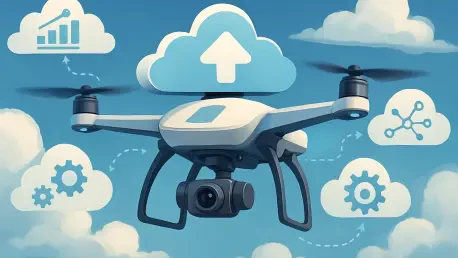In a landmark development for aerial data management across Australia, Sphere, a leading provider of drone technology solutions, has forged a strategic partnership with Esri Australia, the nation’s premier distributor of geographic information systems (GIS) technology. Announced on September 22, this collaboration is set to redefine how industries manage drone data by automating the entire process from capture to cloud delivery. By integrating Esri Australia’s Site Scan for ArcGIS® with Sphere’s cutting-edge HubX and HubT systems, the alliance tackles long-standing inefficiencies in drone workflows that have hindered sectors such as mining, utilities, civil construction, and forestry. The promise of this partnership lies in its ability to transform raw aerial imagery into actionable insights with unprecedented speed and accuracy. This initiative not only addresses current operational challenges but also sets a new standard for how drone technology can drive efficiency and innovation across diverse fields.
Transforming Data Management through Automation
The core of this partnership is a commitment to automation, revolutionizing the way drone data is handled from start to finish. By seamlessly connecting Site Scan for ArcGIS® with Sphere’s HubX, HubT, and Curo remote operations software, the collaboration creates a fully automated drone-to-cloud workflow. Drones equipped with DJI Dock 3 capture data independently, which is then relayed through Sphere’s systems for processing and directly uploaded into Site Scan for the creation of cloud-based outputs like detailed maps and 3D models. This eliminates the cumbersome manual steps that once dominated the process, such as downloading and transferring files by hand. As a result, the risk of human error is drastically reduced, ensuring that data remains consistent and reliable. This automated pipeline allows organizations to shift their focus from tedious data handling to leveraging insights for strategic purposes, marking a significant leap forward in operational capability.
Beyond error reduction, automation brings a level of speed that was previously unattainable in traditional workflows. Once data is captured, it moves through the integrated systems in a matter of minutes, becoming accessible to stakeholders as usable information almost instantly. This rapid turnaround is a game-changer for industries that depend on real-time updates, enabling quicker responses to dynamic situations. Whether it’s monitoring a construction site or assessing environmental changes, the ability to access processed data without delay empowers decision-makers to act with confidence. Furthermore, the streamlined process reduces the need for specialized staff to manage each step, freeing up resources for other critical tasks. This partnership demonstrates how automation can not only enhance precision but also fundamentally alter the pace at which industries operate, setting a benchmark for future technological integrations in aerial data management.
Driving Operational Efficiency and Cost Savings
One of the standout benefits of this collaboration is the dramatic boost in operational efficiency it offers to industries reliant on aerial data. By automating the workflow from data capture to delivery, Sphere and Esri Australia have removed the bottlenecks associated with manual processing, such as file transfers and time-intensive data formatting. This means that sectors like mining can conduct stockpile reconciliation with near-instant results, while forestry operations can produce environmental compliance reports without the usual lag. The ability to transform raw imagery into actionable outputs swiftly ensures that businesses stay ahead of operational demands, maintaining a competitive edge in fast-paced environments. This efficiency is not just about speed but also about enhancing the quality of decisions made based on the data, as timeliness often correlates with relevance in critical applications.
Equally important is the cost reduction that accompanies this streamlined approach. Manual data handling often requires dedicated personnel to oversee each phase, from retrieval to processing, which can inflate operational budgets significantly. With automation, the need for such extensive human involvement diminishes, allowing companies to reallocate labor and financial resources to core activities. This is particularly impactful for industries managing large-scale projects, where every efficiency gain translates into substantial savings over time. Additionally, the reduced likelihood of errors in data processing means fewer costly mistakes or rework, further enhancing the financial benefits. By making drone technology more cost-effective, this partnership democratizes access to high-quality aerial insights, enabling even smaller organizations to leverage advanced tools without straining their budgets.
Prioritizing Safety in Hazardous Environments
Safety emerges as a critical focus of this innovative alliance, particularly for industries operating in high-risk settings. Traditional drone data workflows often necessitate personnel to physically interact with hardware or venture into dangerous areas to retrieve or process information, exposing them to potential hazards. The automated solution developed by Sphere and Esri Australia minimizes these interactions by managing the entire process digitally—from capture through to cloud delivery. This reduction in on-site human presence is a vital step toward preventing accidents, especially in sectors like mining, where unstable terrain or heavy machinery pose constant risks. By prioritizing safety through technology, the partnership addresses a pressing concern that has long challenged industries dependent on aerial surveys.
The implications of enhanced safety extend beyond immediate risk reduction to long-term workforce protection. In utilities, for instance, monitoring infrastructure often involves navigating challenging environments or working at heights, both of which carry inherent dangers. Automating data collection and processing ensures that such tasks can be completed without endangering staff, allowing companies to maintain high safety standards while still meeting operational goals. This approach also fosters greater trust among employees, who can operate with the assurance that their well-being is a priority. Moreover, the ability to conduct frequent and thorough assessments without risking personnel aligns with regulatory demands for safer practices, ensuring compliance without compromising on data quality. This safety-driven innovation underscores the broader potential of automation to transform not just efficiency but the very culture of workplace risk management.
Building a Foundation for Future Advancements
Looking to the horizon, the collaboration between Sphere and Esri Australia is not merely a solution for today but a platform for tomorrow’s innovations. Plans are already in motion to incorporate artificial intelligence (AI) into the workflow, enabling more sophisticated data analysis that can uncover deeper insights from aerial imagery. Additionally, the expansion of beyond visual line of sight (BVLOS) drone operations is on the agenda, promising to extend the reach and versatility of data collection across vast and remote areas. These advancements signal a commitment to staying ahead of technological trends, ensuring that the partnership remains relevant as industry needs evolve. Such forward-thinking strategies position this alliance as a leader in shaping the next generation of aerial intelligence.
Scalability is another key pillar of this forward-looking approach, designed to adapt to emerging challenges and opportunities. By continuously refining platforms like Sphere’s Curo and Esri’s Site Scan for ArcGIS®, the partnership ensures that its solutions can handle increasing data volumes and complexity over time. This adaptability is crucial for industries anticipating growth or shifts in regulatory landscapes, as it guarantees that their data management tools will not become obsolete. The focus on future-proofing also extends to integrating new technologies as they emerge, creating a dynamic ecosystem that evolves in tandem with global trends. This proactive stance not only benefits current users by providing long-term value but also sets an industry standard for how technological partnerships can drive sustained progress in geospatial data management and drone technology applications.
Reflecting on a Milestone Achievement
Reflecting on this transformative partnership, it’s clear that Sphere and Esri Australia have achieved a significant milestone in aerial data management by automating the drone-to-cloud process. Their collaboration successfully addressed persistent inefficiencies, delivering a system that enhanced speed, reduced costs, and prioritized safety across multiple industries. The integration of advanced tools like HubX, HubT, Curo, and Site Scan for ArcGIS® established a robust framework that turned raw data into actionable insights with remarkable efficiency. This alliance set a precedent for how targeted technological solutions can reshape operational landscapes, proving that automation is not just a convenience but a necessity for modern industries. As a result, organizations across Australia gained access to a powerful toolset that elevated their capacity to make informed decisions swiftly and safely, marking a defining moment in the evolution of drone technology.









